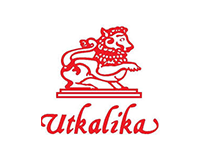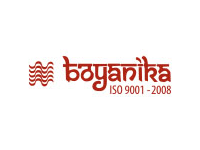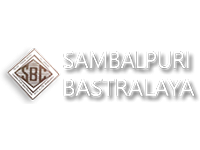Introduction
The Handloom Industry is basically a cottage industry and handloom weavers prefer to work in their homes. Improvement of work place is an important infrastructure support for the weavers. An improved workshed or house-cum-workshed provides better work environment, more space, improves working hours because better lighting is available and enables installation of improved looms. The Government of India, in pursuance of the Textile Policy of 1985, introduced a Centrally Sponsored Scheme called 'Workshed-cum-Housing Scheme' for handloom weavers during the 7th Five Year Plan, in recognition of these aspects and the scheme was also in operation during VIII Five Year Plan. In view of several requests received from various State Governments and handloom agencies to enhance the Government share for construction of these units and in the light of the continuing escalation in the cost of construction the scheme grants was last revised in 1997-98.
Beneficiary
To be eligible under the scheme a beneficiary must earn at least 50% of his income from handlooms and the land should be in the joint names of the wife and husband.
Funding Pattern
- To meet escalations in costs of the construction of units under this scheme, the norms of funding of this scheme for IXth Five Year Plan were revised. The State-wise break up of the allocation is made by the Development Commissioner for Handlooms from time to time depending on the demand and overall financial allocation.
- If the actual cost of construction is more than the unit cost the implementing agency is free to avail higher loan from HUDCO/financial institutions and/or higher contribution from beneficiary. The State Government would also be free to make additional budget provision cover higher cost of construction.
- The above cost ceiling will however be subject to revision from time to time under HUDCO norms.
Land Cost
Cost of land shall be included in the project cost, but shall not exceed 10% of unit cost. Wherever a weaver offers his own home instead of land, the cost of land can be taken as his share of contribution. The implementing agency will ensure that right/title of the land is clearly vested with the weaver. Where the weaver is unable to provide his share, it shall be open to the State Government to provide for the contribution through appropriate budget provisions and/or by providing suitable house sites. Where there is a doubt on the valuation of the land contributed by the weaver, the valuation by a competent Revenue Officer will be final. If the value of land contributed by the weaver/government is more than the weaver's contribution envisaged in para 3 above, there shall not be any increase in subsidy component i.e. for the purpose of calculation of subsidy, the weaver's contribution indicated in para 3 above shall be deemed to be the maximum value of land.
Electrification of workshed and house-cum-workshed.
It has been recognised that electrification provides better lighting facility and thus enhances qualitative and quantitative productivity. The implementing agency should therefore ensure that the internal wiring of the houses is also done and provision is made for it in the project cost, provided, of course, the village has electricity or is due to be covered under an electrification programme during the year.
Action on the part of state governments.
Where State contribution is envisaged, the State Government shall make appropriate budget provisions. State Government should delegate powers for sanction and release of funds to the district level official to the extent possible.
Implementing agencies.
Implementing agencies shall ordinarily be Apex Handloom Coop. Societies or State Handloom Development Corporations, Primary Societies or any other agency specially set up by the Government for the purpose or as may be approved by the Development Commissioner for Handlooms. To the extent possible, in respect of Primary Societies, funds could be released directly to these primary societies/HDC etc.
Preparation of project documents.
Housing projects for sanction of HUDCO should be prepared according to norms of HUDCO guidelines. For assistance, implementing agencies may approach HUDCO's Regional Offices (already notified ) who will depute their representatives to help the implementing agencies in preparation of projects according to HUDCO's guidelines.
Release of funds.
Central subsidy will be released only on firm tie up with HUDCO or any other agency like commercial banks where there is a loan component. The Central subsidy could be released to the implementing agencies on the recommendation of the State Governments/UTs. Care should be taken to see that the State Handloom Development Corporations/ State apex Societies/weavers societies should not use these funds for any other purpose. The State Government will obtain a written undertaking from the weavers that the house/workshed allotted to him will not be let out or sold out to any other person for at least ten years after the construction is completed. This will be in addition to the conditions as per agreement made with HUDCO or Bank where such loan is involved.
Loan repayment.
Weavers will be required to repay the loan, if any taken, as per terms set by HUDCO/Financial Institutions, Commercial Bank etc. and Government of India.
Monitoring & evaluation.
Monitoring and evaluation of the progress of the scheme will be done by the concerned Director of Handlooms of State and the Development Commissioner for Handlooms, New Delhi. The State Governments will be required to submit the physical financial progress reports and also the Utilisation Reports/certificate to the Office of the Development Commissioner for Handlooms, New Delhi as per the prescribed schedule and proforma enclosed.
PROFORMA.
CENTRALLY SPONSORED WORKSHED-CUM-HOUSING SCHEME FOR THE YEAR __________ PHYSICAL/FINANCIALPROGRESS REPORT.
Sl. No.
Name of the District
Units sanctioned (in numbers)
Financial assistance released as Central Share
No. of Units constructed
Workshed
Workshed-cum-Housing
Centralassistance utilized Balance Remarks.
RuralUrbanRuralUrbanRs.RuralUrbanRuralUrbanRs.
Signature of the Director/Commissioner

















